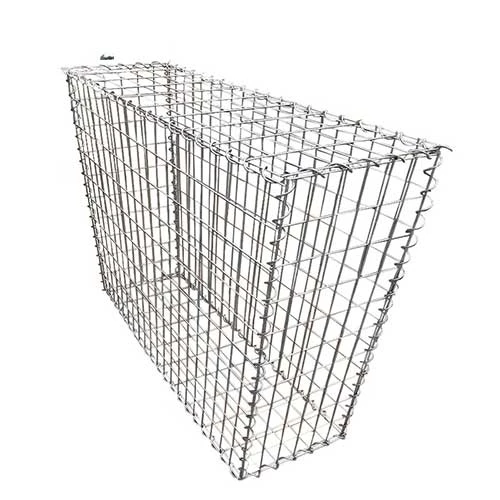-
 Phone:
Phone: -
 Email:
Email:

Hexagonal Chicken Wire Mesh for Garden Protection and Fencing Solutions
Exploring Hexagonal Chicken Wire Mesh A Versatile Solution for Poultry and Beyond
Hexagonal chicken wire mesh, often referred to simply as chicken wire, has been an essential material in the agricultural sector for decades. Its unique hexagonal pattern, typically made from galvanized steel or other metal, provides a lightweight yet durable barrier for a variety of applications. While its primary use is in poultry farming, its versatility extends far beyond that, making it an invaluable resource for farmers, gardeners, and DIY enthusiasts alike.
The Design and Construction of Hexagonal Chicken Wire Mesh
The structure of hexagonal chicken wire consists of a series of intersecting wires twisted together to form hexagons—hence the name. This design not only contributes to its lightweight nature but also improves its strength and flexibility. The hexagonal openings are large enough to allow for adequate airflow, crucial for keeping poultry comfortable, yet small enough to prevent chickens from escaping and predators from gaining access.
Typically available in various gauge sizes, chicken wire can be selected based on the specific needs of the user. Thicker gauges provide increased durability, suitable for more aggressive wildlife control, while finer gauges can be employed for lighter-duty tasks, such as protecting young plants or ornamental gardens.
Applications in Poultry Farming
In the realm of poultry farming, hexagonal chicken wire is paramount. It is widely used for constructing chicken coops, runs, and enclosures, providing safety and security for chickens. The mesh allows sunlight and fresh air to circulate while keeping out predators such as raccoons, foxes, and hawks. The ease of installation is another attractive feature; farmers can quickly and efficiently create a secure area for their flock without extensive construction skills or costly materials.
Furthermore, chicken wire serves not only as physical barriers but also as a tool for managing the health and safety of poultry. By providing space for chickens to roam while limiting exposure to dangers, farmers can promote natural behaviors such as foraging and dust bathing, which are essential for the wellbeing of the birds.
hexagonal chicken wire mesh

Gardening and Landscaping Uses
Beyond poultry, hexagonal chicken wire is also a favored material in gardening and landscaping. Gardeners utilize it to protect prized plants and vegetables from critters like rabbits and deer. By creating a fence or barrier, it helps to ensure that plants grow without the destructive interference of local wildlife.
In addition, chicken wire is often used in vertical gardening. Gardeners can bend the mesh into trellises or frames, allowing climbing plants to grow upwards, thus maximizing space and sunlight exposure. This not only enhances the productivity of a garden but also adds an attractive visual element to any outdoor space.
Crafting and DIY Projects
The creative potential of hexagonal chicken wire extends into the crafting world. Many DIY enthusiasts leverage this material to create unique home decor items, such as picture frames, wall hangings, and even decorative lanterns. Its flexible nature makes it easy to manipulate into various shapes and sizes, while the industrial aesthetic of the wire aligns perfectly with contemporary design trends.
Moreover, chicken wire can be used in arts and crafts projects, including creating three-dimensional sculptures or as a base for handmade ornaments. Its ability to hold shape while remaining lightweight makes it a preferred choice for those looking to experiment with different artistic techniques.
Conclusion
In summary, hexagonal chicken wire mesh serves a multitude of purposes, standing out in the realms of agriculture, gardening, and crafting. Whether you are a farmer seeking dependable fencing for poultry, a gardener looking to safeguard your plants, or a DIY enthusiast eager to create something unique, chicken wire is a practical and versatile material that can meet various needs. Its durability, flexibility, and aesthetic appeal render it an enduring choice, making it a staple for many practical and artistic applications. Embracing the use of chicken wire could uncover endless possibilities, both in maintaining a safe environment for livestock and expressing creativity in the garden or home.
-
Wire Mesh for Every Need: A Practical SolutionNewsJul.25,2025
-
Steel Fences: Durable, Secure, and Stylish OptionsNewsJul.25,2025
-
Roll Top Fencing: A Smart Solution for Safety and SecurityNewsJul.25,2025
-
Cattle Farm Fencing Solutions for Maximum SecurityNewsJul.25,2025
-
Affordable Iron Binding Wire SolutionsNewsJul.25,2025
-
Affordable Galvanized Wire SolutionsNewsJul.25,2025
-
Wire Hanger Recycling IdeasNewsJul.25,2025








